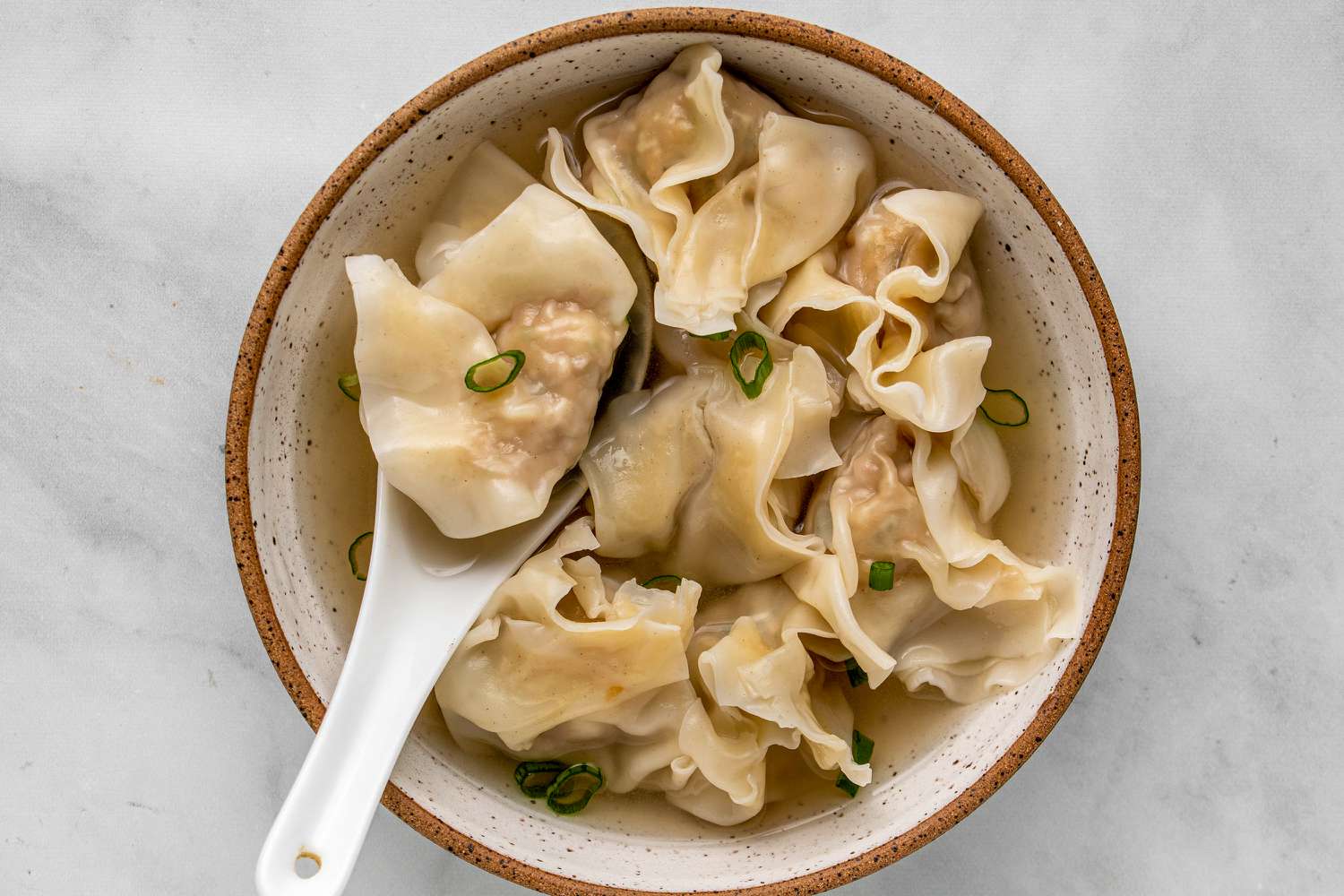
28 interesting facts about Wontons
- 👁️ 363
Wontons, a staple in Chinese cuisine, have captivated the taste buds of food enthusiasts around the world with their delicate wrappers and rich, savory fillings. Originating from China, these bite-sized dumplings have traversed beyond their traditional roots, evolving into various forms and flavors that reflect the diversity of Chinese regional cooking. Whether served in a broth, deep-fried, or as part of other dishes, wontons represent a culinary tradition that has been passed down through generations, embodying the essence of comfort food in Chinese culture. Here are 28 interesting and informative facts about wontons that highlight their significance, variety, and culinary appeal.
- The word “wonton” translates to “swallowing a cloud,” which describes their appearance when cooked in broth.
- Wontons have been part of Chinese cuisine since the Tang Dynasty (618–907 AD).
- Traditional wonton fillings include ground pork, shrimp, and a mixture of seasonings such as soy sauce, ginger, and sesame oil.
- Wonton wrappers are made from wheat flour, water, and eggs, resulting in a thin, silky texture.
- There are several regional variations of wontons in China, each with its unique preparation method and ingredients.
- In Sichuan, wontons are often served in a spicy sauce as “Sichuan red oil wontons.”
- Cantonese wontons are typically filled with shrimp and served in a clear broth.
- In Shanghai, wontons may contain bok choy and a small amount of ground pork, showcasing a lighter flavor profile.
- Wontons can be boiled, steamed, or fried, offering different textures and tastes.
- Fried wontons are often served with sweet and sour sauce as an appetizer in American-Chinese cuisine.
- Wonton soup is a comforting dish, with wontons served in a flavorful broth often accompanied by vegetables and sometimes noodles.
- The act of making wontons is considered a family activity during holidays and gatherings in Chinese culture.
- Some wontons are shaped like ancient gold ingots, symbolizing wealth and prosperity.
- The fillings and shapes of wontons can vary greatly, with some regions including unique ingredients like black mushrooms or water chestnuts for added texture.
- In addition to savory versions, there are sweet wontons with fillings like red bean paste or dates.
- The dough for wonton wrappers is rolled out thinly and cut into squares, a process that can be done by hand or machine.
- A traditional way to wrap wontons involves placing the filling in the center, folding the wrapper into a triangle, and then bringing the two corners together.
- Wontons are a popular dish during the Chinese New Year, symbolizing good fortune.
- In the Philippines, a variation called “Pancit Molo” is a soup dish with wontons that act as the main ingredient.
- The world record for the largest serving of wontons was set in China, with thousands of wontons prepared and served to participants.
- Frozen wontons are widely available in supermarkets, offering a quick and convenient option for home cooking.
- Homemade wonton wrappers can be substituted with pasta sheets in a pinch, although the texture and taste may differ.
- Wonton making workshops are popular activities, teaching the art of dough making and wrapping techniques.
- The broth for wonton soup is typically made from chicken, pork, or vegetables, simmered for hours to develop a deep flavor.
- Some chefs add a small amount of sugar to the wonton filling to enhance the flavors.
- Vegetarian and vegan versions of wontons are becoming more popular, using ingredients like tofu and mushrooms as fillings.
- In some Chinese restaurants, wonton soup is served with a variety of condiments, including chili oil, soy sauce, and vinegar, allowing diners to customize the flavor.
- Wontons have influenced other cuisines, with variations found in Thai, Malaysian, and Indonesian dishes, showcasing the cross-cultural appeal of this versatile dumpling.
Wontons are more than just a dish; they are a cultural emblem that represents the richness of Chinese culinary traditions. With their delicate wrappers, versatile fillings, and various cooking methods, wontons continue to delight and comfort people across the globe. The art of making and enjoying wontons brings people together, reflecting the communal spirit of Chinese dining culture. As wontons continue to evolve and inspire new interpretations, they remain a beloved symbol of creativity and culinary heritage in Chinese cuisine and beyond.
Wontons, a staple in Chinese cuisine, have captivated the taste buds of food enthusiasts around the world with their delicate wrappers and rich, savory fillings. Originating from China, these bite-sized dumplings have traversed beyond their traditional roots, evolving into various forms and flavors that reflect the diversity of Chinese regional…